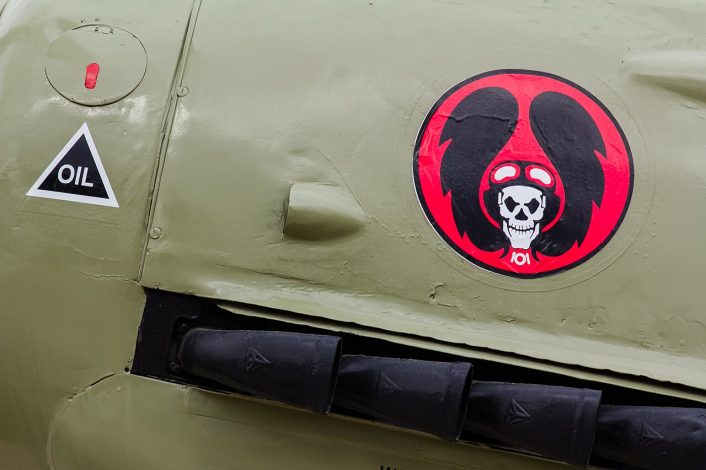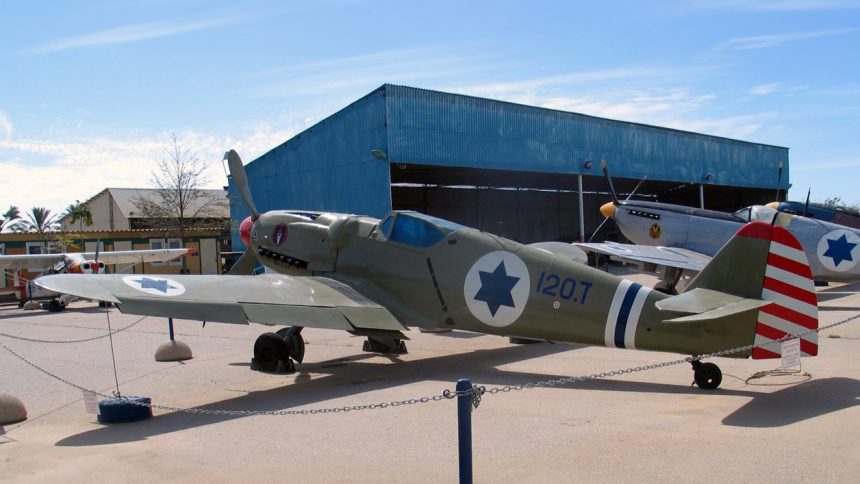The newly formed State of Israel made use of the only thing available, it wasn’t the best and they didn’t have a lot of them, but in one of history’s biggest and least known ironies, the Jewish state defended itself with a fighter born of Nazi roots.
Humble Beginnings
Declaring independence on May 14, 1948, Israel found itself surrounded by well –armed enemies in the combined armies of Syria, Iraq, Egypt, Lebanon, and Transjordan (Jordan.) These countries had large armies and air forces equipped mostly from the left-over stockpiles of World War Two that had concluded in 1945. The Jews however, had been fighting since November of 1947 with very little in the way of equipment, especially heavy weapons and aircraft.
The Sherut Avir (Air Service) was formed out of a civilian “glider club”, and was used primarily as a way to supply isolated desert Israeli settlements and for reconnaissance. Flying a handful of former British Auster Autocrat light liaison aircraft, the most elaborate offensive military attacks that could be mustered from the air was shooting rifles and machineguns out the windows and tossing grenades out similar to early World War One techniques. Other light civil aircraft were also employed.
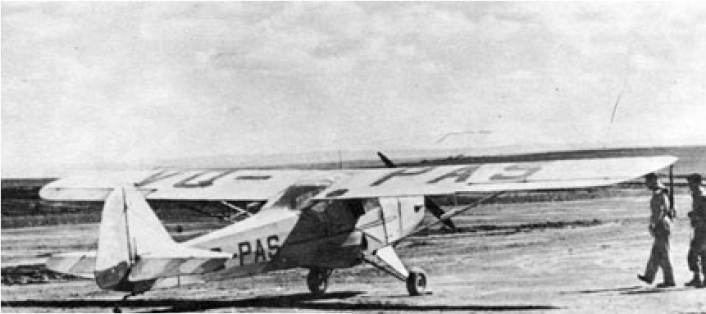
Embattled and Embargoed
Israel searched the globe to purchase weapons and aircraft, but due to a U.S. led arms embargo, and the British, who had already armed and befriended many of Israel’s angry neighbors, were actively enforcing the embargo with flying patrols. In addition, Americans could be punished with prison time and threatened with loss of citizenship if caught serving under a foreign flag.
One American who ignored the threats and joined the fight was Lou Lenart. Lou was a World War Two Marine fighter pilot, flying F4U Corsairs in the Battle of Okinawa and over Japan. Lou flew with squadron VMF-323, and left with the rank of captain after the war.
Lou contacted another veteran of World War Two, a B-17 bomber pilot, Coleman Goldstein in April, 1948. Goldstein had been shot down over France during the war, and saved his crew in the crash landing. Aided by the French Free Resistance, he survived the winter, reaching safety after he crossed the Pyrenees Mountains on foot.
Jewish American veterans who were pilots had difficulty getting hired on by civilian airlines in their own country, so many went to Israel to fly for the new air force desperate for experienced pilots. Lou asked Coleman to join him in an adventure.
Another American, Al Schwimmer, had formed an aviation company and was using it to smuggle surplus aircraft through South America over to Africa and then to Europe. From Europe they wound up in Israel. Schwimmer had purchased several twin-engine Curtiss C-46 transports and a few Constellation four-engine aircraft. In order to avoid the embargo, Schwimmer had the aircraft registered in Panama.
Al had somehow also acquired two Noorduyn C-64 Norsemen brush aircraft. It was a rugged high-wing monoplane with a large cargo bay. The perfect type of aircraft to fly supplies, arms, wounded, whatever was needed. Made in Canada, and located in Italy, the Norsemen planes only had a range of 500 miles, but Tel Aviv was over 1,200 miles away.
The interiors of the Norsemen were gutted and rubber bladder tanks installed, not knowing for sure if they would have enough fuel to make the trip even with the additional tanks. They had no radios, no parachutes, and only maps from a world atlas. The runway ended with a cliff, and having planes overloaded with fuel made take-off a dangerous challenge. Goldstein sat in the cockpit of one, Lenart the other, along with co-pilots. As they prepare to takeoff, Goldstein glances over at the other aircraft as Lenart bolts from the cockpit, runs to the edge of the runway and grabs a handful of wildflowers. Climbing back into his plane, Lenart and Goldstein take off.
After a trip of over 11 hours over nothing but water, not seeing a ship, plane, or land, they arrive in Tel Aviv in the dark to a rudimentary runway, illuminated by fire barrels. A crowd was there to greet them, cheering the arrival of the much needed aircraft. Lou Lenart exited his aircraft, found a pretty young lady and handed her the wildflowers.
Needed Firepower
Flush with American dollars from donors, the Israeli Haganah (The Defense) led by David Ben Gurion of the Jewish Agency, went arms shopping. However, with embargos in place and everyone betting on Israel losing, the only country willing to sell to the Jews was Czechoslovakia. The Czechs desperately needed foreign currency, and during the German occupation of World War Two, they had an arms industry they inherited when the Germans pulled out, as well as a lot of surplus left lying around. They sold Israel small arms and ammunition, shipping it via a U.S. licensed carrier. The operation was latter shut down by U.S. authorities in Prague.
In April of 1948, Czechoslovakia and Israel came to terms over the sale ten Avia S-199 fighter aircraft, including training for pilots and crews. The Avia plant was producing the Messerschmitt Bf-109G during the war years, and still had airframes and parts. It had exhausted the supply of the Bf-109’s standard engine, the Daimler-Benz 605, after a fire destroyed several in storage. The Czechs did however have a large supply of the Junkers Jumo 211F engines, remaining from the production of the Heinkel He-111 twin-engine bombers also being assembled there.
Someone got the idea of mating the bomber engine to the fighter frames and the Avia S-199 was born. The bomber engine was heavier than the original engine; it had way more torque but less horsepower. The front of the aircraft took on a new shape to house the new power plant, with a redesigned cowling and the centerline nose cannon had to be deleted. A large paddle-bladed propeller was mated to the engine, constantly creating issues with the synchronization of firing the two 13mm cowling mounted machineguns without hitting the blades. Two 20mm cannons were carried as well, one under each wing. Top speed was around 328 mph with a range of 530 miles.
The aircraft handled poorly, both on the ground and in the air. The extra torque of the bomber engine caused the aircraft to drastically pull left, causing many accidents on the ground. The narrow-tracked landing gear made it prone to ground looping. It was slow to accelerate, with touchy controls, and it was given the name “Mezec” (Mule) by Czech pilots.
Six pilots went to Czechoslovakia for training on the aircraft. By the time they reached the training base, the invasion of the surrounding armies was only two days away. All of the Avia S-199s were still in Czechoslovakia. Israel was basically defenseless.
Adding to the irony of those fighting to save the Jewish state flying Nazi designed aircraft, the pilots in training were outfitted with leftover German flight gear: helmets, parachutes, and even flight suits still sporting Luftwaffe (German Air Force) insignia. Returning after only two days of training upon hearing the news of artillery barrages and massing of troops, and outer Jewish settlements being attacked, the pilots still had no planes to fly.
In order to get the Avias to Israel, the S-199s were disassembled, the wings were removed and they were stuffed in pieces into Schwimmers C-46 transports. Six were originally being transported, but the crash of one of the C-46’s left only four remaining complete fighters for Israel at this most desperate time. Once on the ground in Israel, mechanics worked constantly to reassemble the aircraft in one of two hangers. The Egyptians bombed the hangers, destroying the one not occupied by the aircraft assembly operations, but killing several people. The assembly hanger is untouched. The plan was to attack an Egyptian air base at first light, with no test flights or continued training. The first combat mission would be the test flights, testing whether the mechanics had got them reassembled properly and everything was working as it should.
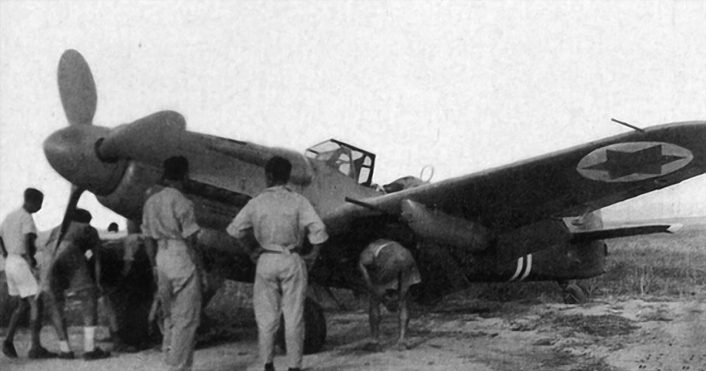
Saving Tel Aviv
At 5:00 in the evening of May 29, 1948, word came that a bridge had been blown by Israeli troops at Ishdud, a mere 17 miles south of Tel Aviv. On the other side of the bridge were between six and ten thousand Egyptian troops, with armor, hundreds of vehicles, and anti-aircraft weapons, lining the road bumper to bumper. On the Israeli side, only about two-hundred fifty Israeli soldiers stood. It seemed there was little hope for the Israelis.
Instead of the planned dawn airfield raid, the four pilots of the Avia S-199s, led by Lou Lenart and consisting of Modi Alon, Ezer Weizman, and a South African named Ed Cohen, took off to attack the Egyptian convoy. They found the convoy and pressed home the attack. Lenart nosed down and dropped two bombs, and made several strafing passes. Lenart stated he had not seen that much anti-aircraft fire in World War Two. One plane flown by Cohen is lost, either hit by ground fire or possibly the interrupter mechanism for the cowl mounted machineguns malfunctioned and he may have shot his own propeller away. The other three continue the attack, struggling with jamming guns, bomb release malfunctions, and flying planes they couldn’t even read the markings on the controls or hadn’t received proper training on; these sluggish, poor handling aircraft, bastardized from parts of a bomber and parts of a front- line fighter. They manage to get back to base, inflicting minimal damage on the Egyptians. Upon landing, one of the Avias is damaged and would be out of commission. The Israeli fighter strength was reduced by 50 percent, from four operational planes to now two.
However, Israeli intelligence intercepts this message that night, after the airstrike and an Israeli brigade hits them in the flank: “We are heavily attacked by enemy aircraft and we are scattering.” It was from the Egyptian brigade commander to Cairo. The Egyptians were convinced the four plane attack was just the beginning of a massive air assault, and moved off to the east, sparing Tel Aviv and therefore Israel.
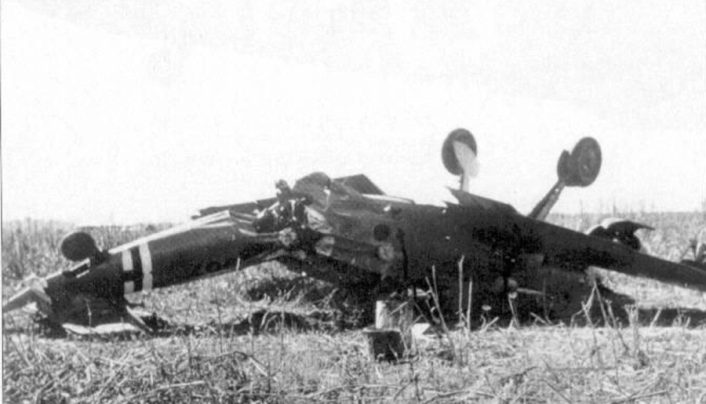
Other Avia Action
Ezer Weizman and an American volunteer, Milton “Cy” Rubenfeld, bombed a railway station and strafed enemy troops on May 30. Rubenfeld’s S-199 was hit by anti-aircraft fire and he was forced to bail out. Now only one serviceable fighter was left.
The only airworthy Avia S-199 was now being flown by Modi Alon. He attacked an enemy column on May 31. Alon also achieved Israel’s first air-to-air victories on June 3, 1948 as two Egyptian C-47 Dakota transports, converted to bomber duties had flown to Tel Aviv on a bombing mission. Alon quickly shot down the first C-47 with it crashing in the sea, and chased the second Dakota that was attempting to evade, shooting it down as well with a head-on pass.
During a United Nations brokered cease fire in June, around a dozen more Avia S-199 made their way to Israel. These were dispersed to a strip near an orange grove that could be used for camouflage. In early July, four of the Avia’s were to attack an Egyptian airfield, one crashed on takeoff, the remaining becoming lost in cloud cover, attacked troops near Gaza. One S-199 was lost piloted by an American volunteer named Robert Vickman. On July 10, two of the few serviceable Avias, engaged a pair Syrian aircraft strafing Israeli vehicles and troops, shooting down one Syrian Harvard and chasing the other from the area. Pilot Lionel Bloch from South Africa didn’t return from this mission.
On Jul. 18, Modi Alon struck again, while returning from an attack mission flying an S-199, he downed an Egyptian Spitfire. Modi Alon was killed on Oct. 16, 1948, when trying to land his Avia, the landing gear malfunctioned. While flying maneuvers in an attempt to free the gear, and the engine began smoking, with the aircraft hitting the ground and bursting into flames.
The Avia S-199 saw limited use on into 1949, but the acquisition of better types soon replaced most of the aircraft’s duties. Soon the Israelis would have Spitfires, putting them on a more level playing field. Even a small number of American B-17 bombers found their way to the fight, to be joined by various other types from World War Two. Czechoslovakia continued to fly the Avia S-199 until 1957.
Heroes and Stories from Around the Globe
Pilots from several nations went to Israel in the fight for independence, including South Africa, Canada, Great Britain, and the United States. One notable example is U.S. Marine Capt. Chris Magee who flew in World War Two with the famed VMF-214, the “Black Sheep Squadron”, being the unit’s second-leading ace behind Maj. Greg “Pappy” Boyington. He was trained to fly the Avia, but failed to score any victories in Israel’s war.
Al Schwimmer was prosecuted for violating the embargo and lost his U.S. Citizenship. He returned to Israel and founded the IAI (Israel Aerospace Industries). Schwimmer was later pardoned by President Clinton.
An American volunteer who flew for the U.S. Army and the Royal Air Force in World War Two, Milton “Cy” Rubenfeld become the father of the famed “Pee-Wee Herman “, Paul Reuben. Cy was one of the original five pilots of the Israeli 101 Squadron.
And then there is Lou Lenart, who led the first mission with the Avia S-199s, and picked those flowers in Italy and handed them to that pretty girl at the dirt landing strip in Israel. Twenty years later while standing on a street corner in New York City, an attractive woman approached Lou and asked if he might be Capt. Lenart, to which he responded he was, not recognizing her. She said “I’m the girl you gave the bouquet of wildflowers to at that little airstrip north of Tel Aviv in 1948.”
